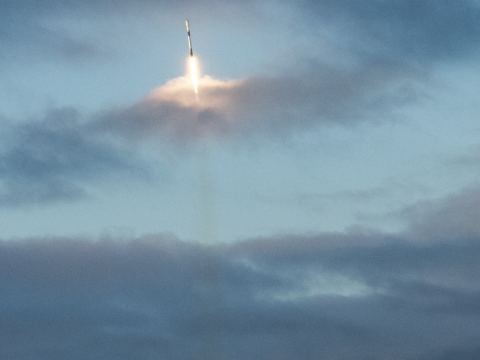Marines Receive Boost From Commercial Technologies
Marines are deploying with new commercial gear. Are other commercial-sector technologies potentially adaptable to military/humanitarian uses? How about ideas yet to see the drawing board? No concept is too far-fetched; discuss your ideas here.
With commercial off-the-shelf equipment ranging from portable geolocation systems, voice translators and solar-powered tents, Marines can head into the field deploying gear that's ready to roll. With its two-fold mission of conducting humanitarian and combat operations, sometimes both simultaneously, the Marine Corps keeps an eye out for new capabilities. In his article, "Off-The-Shelf Gear Strengthens Marine Operations," in this issue of SIGNAL Magazine, Henry S. Kenyon describes how the Marines work with the other services to learn from, build upon and share new technologies. These include the Rapid Data Management System-RDMS-a geolocation system with PDAs linked to a BGAN Inmarsat satellite terminal. RDMS lets Marines conduct site surveys, tag buildings and perform other tasks via the Global Positioning System, which enables transmission back to the command center. The Marines initially used the RDMS, manufactured by Global Relief Technologies, during Asian tsunami disaster relief efforts in 2004. They purchased upgraded terminals in 2008. The size of a small notebook computer, the RDMS creates a WiFi bubble over a 50- to 100-yard area supporting 10 to 30 PDAs. Communication without language barriers is critical in all mission scenarios. The MilTrans Voice Response Translator (VRT), manufactured by Integrated Wave Technologies, meets these requirements. The size of a deck of playing cards, the original handsfree translator stores phrases in up to 52 languages; the newer version stores up to 200 phrases. The VRT is useful in the field, according to Josh Noble, who mustered out of the Marine Corps in 2009. As a lance corporal with the 3rd Battalion, 2nd Marines, serving in Iraq, Noble says that for most of his deployments, he was the only man in his unit equipped with a translator:
We used it as a means to translate key pieces of information to the Iraqis that we were trying to talk to. It was a lot quicker and easier and much smoother to use the VRT as opposed to trying to communicate with your hands or make motions.
The VRT, now fielded to all the services and the Coast Guard, has been invaluable to troops who search houses. Noble said the translator enabled Marines to communicate sans human interpreter. Solar-cell technology is reducing the amount of fuel necessary in field operations. With advancement in thin film technology, a solar-powered tent has undergone initial Air Force testing. It has shown promise in taking the place of portable fuels. Tom Eggers, director of the tent's manufacturer, Utilis, says the solar cell configuration cuts internal A/C usage by 26 percent and increases power output by 14 percent. He says the Marine Corps and other services are considering their use:
The tent is very effective for command posts and outposts. Company engineers currently are working ... with the goal of making its components more adaptable with military equipment.
Are other commercial-sector technologies potentially adaptable to military/humanitarian uses? How about ideas yet to see the drawing board? No concept is too far-fetched; discuss your ideas here.




Comments